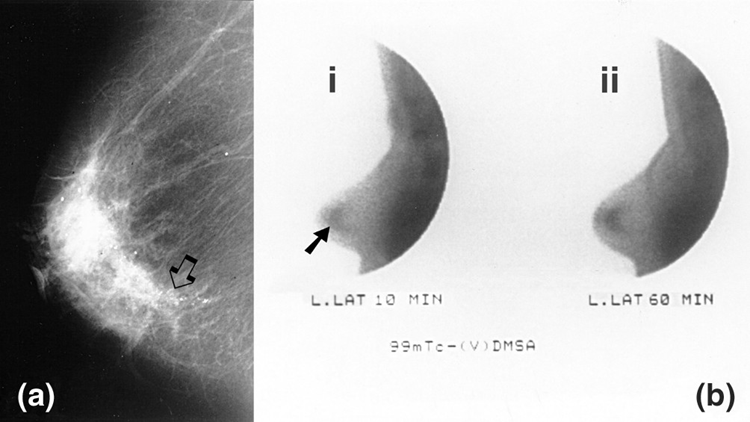We are pleased to announce the publication of a new review article exploring thiamine deficiency in food secure countries. As we have written on many occasions, including an entire book on the topic, the expression of thiamine deficiency in the western world is different than in countries with food insecurity. In the US especially, where the predominant diet is comprised largely of processed, but thiamine fortified foods, thiamine deficiency emerges not from the classically defined, starvation-based malnutrition, but from a sort of high calorie malnutrition. Here, calories are plentiful, and by current RDA standards, so too is thiamine, but somehow broad swaths of the population still develop deficiency. In the article we argue that it is not the absence of thiamine but rather regular exposure to anti-thiamine factors in the diet and environment that precipitate deficiency. It is a different starting point, a different chemistry, and ultimately, a different symptomology. The article is called: Hiding in Plain Sight: Modern Thiamine Deficiency. Enjoy.
From the abstract:
Thiamine or vitamin B1 is an essential, water-soluble vitamin required for mitochondrial energetics—the production of adenosine triphosphate (ATP). It is a critical and rate-limiting cofactor to multiple enzymes involved in this process, including those at the entry points and at critical junctures for the glucose, fatty acid, and amino acid pathways. It has a very short half-life, limited storage capacity, and is susceptible to degradation and depletion by a number of products that epitomize modern life, including environmental and pharmaceutical chemicals. The RDA for thiamine is 1.1–1.2 mg for adult females and males, respectively. With an average diet, even a poor one, it is not difficult to meet that daily requirement, and yet, measurable thiamine deficiency has been observed across multiple patient populations with incidence rates ranging from 20% to over 90% depending upon the study. This suggests that the RDA requirement may be insufficient to meet the demands of modern living. Inasmuch as thiamine deficiency syndromes pose great risk of chronic morbidity, and if left untreated, mortality, a more comprehensive understanding thiamine chemistry, relative to energy production, modern living, and disease, may prove useful.
We Need Your Help
More people than ever are reading Hormones Matter, a testament to the need for independent voices in health and medicine. We are not funded and accept limited advertising. Unlike many health sites, we don’t force you to purchase a subscription. We believe health information should be open to all. If you read Hormones Matter, like it, please help support it. Contribute now.
Yes, I would like to support Hormones Matter.
Image by Hands off my tags! Michael Gaida from Pixabay













Dr. Lonsdale and Dr. Marrs,
First of all, thank you so much for the time and effort you have put into your work. The information and research that you continue to put out is invaluable. I just wrapped up week number five of mega dose thiamine for my constant fatigue and debilitating brain fog, I started at 50mg of Ecological Formula’s Allithiamine (TTFD) and have slowly worked my way up to 400mg, where I have been for the last week. In addition, I have been taking daily 200mg magnesium glycinate, 100mg B6, 5,000mcg B12, and 250mg B2. Unfortunately after a month in, I have yet to notice any improvement. I may be experiencing a slight paradox reaction with an exacerbation of my fatigue and brain fog, but my symptoms fluctuated so much already that it’s hard to know. As I am almost out of my supply of B1, I am wondering if at this point it makes sense for me to order more and continue at 300mg (or higher?), or just assume that since it hasn’t worked yet it’s probably time to move on. Thank you so much for your help, and again, I can’t thank both of you enough for all your hard work in getting information out on thiamine!
It is difficult to tell at this point. You could consider a few things, maintaining at a lower dose for a longer period of time. switching to a different formulation, such as benfotiamine or even the a thiamine HCL and/or some combination thereof, or of course stopping altogether. I would also note that 100mg of B6 is a high dose and you might consider tapering that one down. Additionally, there are a whole compliment of other nutrients that are needed for general health and the mitochondria. I would look into other potential deficiencies. Finally, diet matters. No amount of supplementation will correct a bad diet. Make sure your diet is organic, unprocessed, with sufficient protein and fats, and absent thiamine degrading products like coffee, tea, alcohol, tobacco, and of course, medications. While medications may be necessary, some block thiamine absorption and/or degrade by other mechanisms and so if you are taking these meds you may need a higher dose yet.
Thank you so much for your quick and thorough response. While I understand that thiamine is not a treatment that works for everyone, it sounds like it might be worthwhile to give it a bit longer of a trial in a different variation before giving up. I’ll finish off my supply of TTFD and then start up on HCL, while keeping the rest of the information that you provided in mind. Thank you again so much for your help and for your insights.
I would go higher… Derrick Lonsdale often recommends to keep upping until symptoms wane. I also treat the acidosis a deficiency creates and that greatly improves my symptoms. Though high dose IV thiamine HCL I believe will do the trick also according to some literature I have found.
Thiamine is NOT a quick fix. It takes time. Quite a lot of time. Some may see symptoms improve quickly but every deficiency is different. In studies using HCL there were some drastic differences in dosages. Some had symptomatic relief quite low some had to go really high. I take an “alkaline” supplement and that has the list effect on fatigue and cognitive issues and my severe POTS that often leaves me bedridden. I believe thiamine is the issue but I’ve been deficient my whole life so who knows what I need to enzymatically get it all going. Alcoholics deemed deficient can be on 500mg HCL IV three times a day. That’s A LOT. Personally I feel I need something like this. I think for some very very very high dosages are what is needed. It’s just almost impossible or rare to be able to find anyone willing to give them to you. Maybe TTFD orally at 5g May do the trick? Who knows?? I think for some really really huge doses may be required.
Thank you very much for your suggestions, Pat. I’m definitely interested in giving thiamine a try for an extended time, especially considering how much hope I had in it at a time when it feels impossible to find anything to put hope in. I will try increasing my dose of TTFD in my final days before my supply runs out, but unfortunately to the best of my knowledge, getting anywhere close to five grams orally is pretty impossible. The highest dose I’ve found in capsule form is 50mg, so in order to take five grams I’d have to be taking 100 pills a day. I’ll do absolutely anything to get well, but at that rate, I may not have room for desert! 🙂 Thank you so much for your suggestion though, I didn’t realize how long of a process healing from a thiamine deficiency can sometimes be, so I will definitely be ordering another bottle, perhaps in a different variation.
Your article is brilliant. Thank you.
Thank you.
Im greatly concerned about the Aldehyde Emissions (the hangover component of Legal drinking Ethanol) in Ethanol entrained E85 Gasoline! It is known that Alcoholics suffer Thiamine deficiency, as well as damaged Mitral valve, Fatty Liver and random stabbing in the lower limbs! I suffered all these from exposure to Aldehyde in Pulp Mill Emissions. Dozens of us were sent to a Sleep Disorder Clinic, but with no explanation!
I had already had adverse reactions to the Neurotoxin Ethylene oxide used as a plastic softener in Oxygen Tubing (IV and Dialysis Bags etc)so was not able to use the CPAP Pump. It was through finding Dr Lonsdale’s work around 2004 about Infantile Apnea and inborn Thiamine deficiency that helped me in recovery. There was enough Thiamine in a B100, supplement that my Apnea stopped!
Also the Conventionaly grown vegetables with Nitrate Fertilizer were causing Sinus inflammation, with no noticeable effects when eating Organically grown vegetables. I hope sharing this helps you join some dots about Environmental exposures. È85 Gasoline emits 50% more Formaldehyde than Conventional gasoline.
Vehicle exhaust started onsetting burning throat, tongue and mouth from Formic acid, from the Chemical Chain of Toxic Methanol (used in Biodiesel) >Formaldehyde which metabolizes to Formic acid in the Liver, then to Lactic acid in ALL our cell’s! Our Cellular Lactic acid is first cousin’s with the Lactic acid in Cow Dairy. Many of my co-workers also became Lactose intolerant!
My Lactic acid spiked so high that I suffered Stroke like symptoms (MELAS) which Allopathic Medicine believes is only acquired through birth.
Feel free to Contact me as the as we were inhaling the Electrolyte Potassium which resulted in over a dozen Cardiac events and were Toxic with the Nutritional Mineral, Manganese.